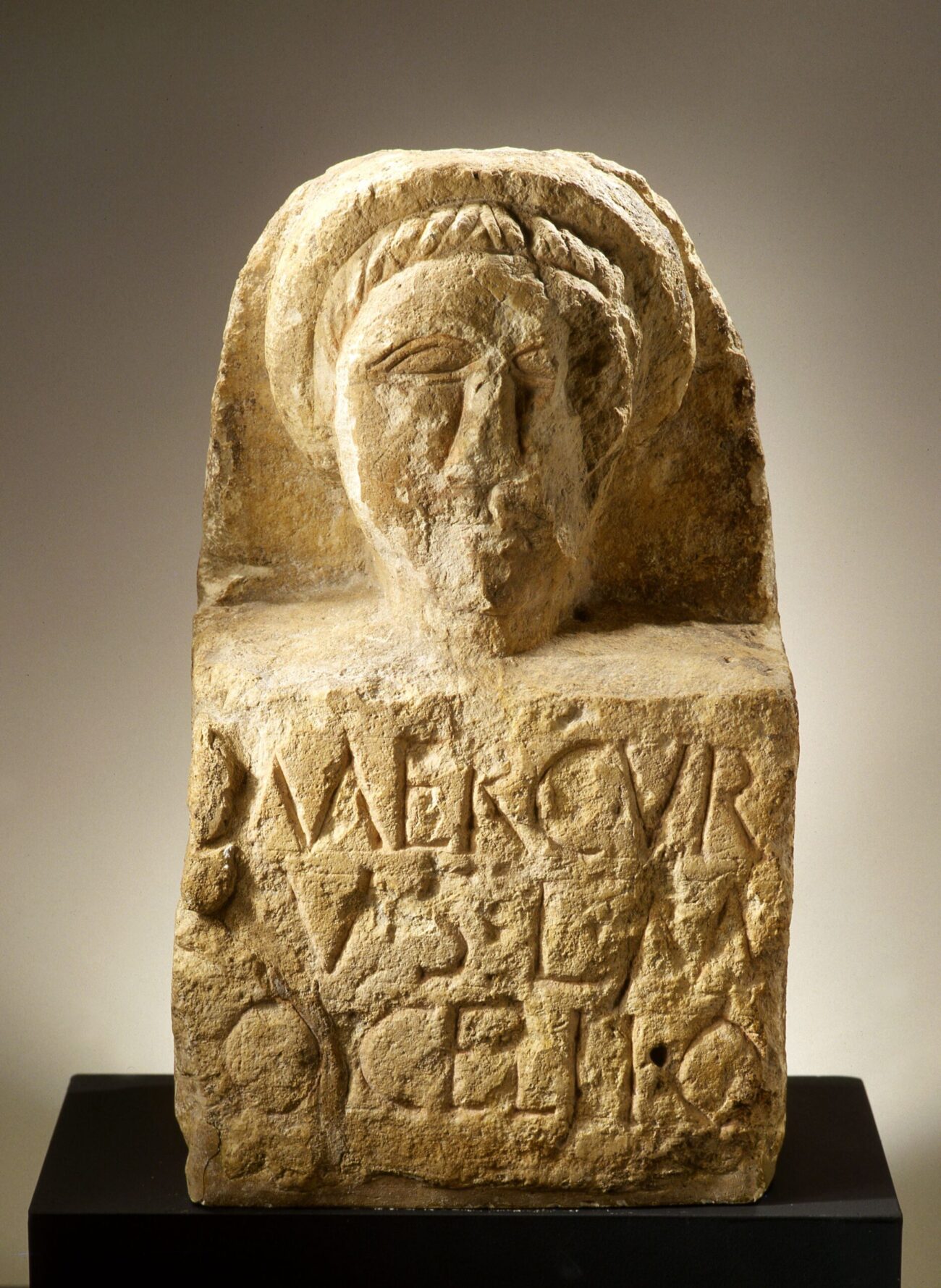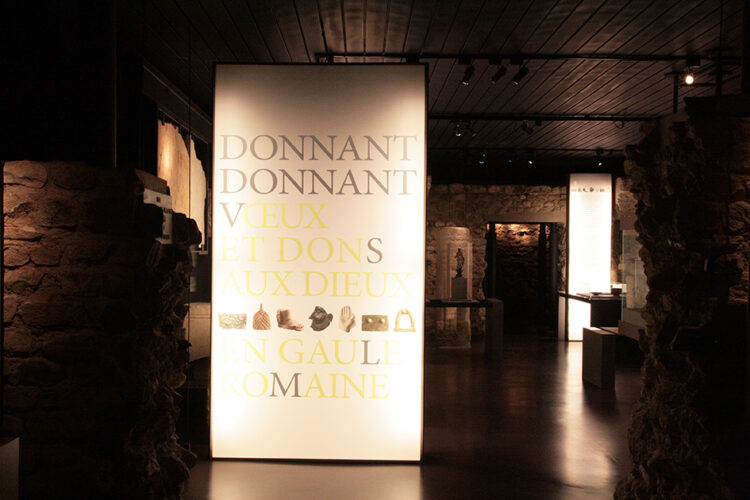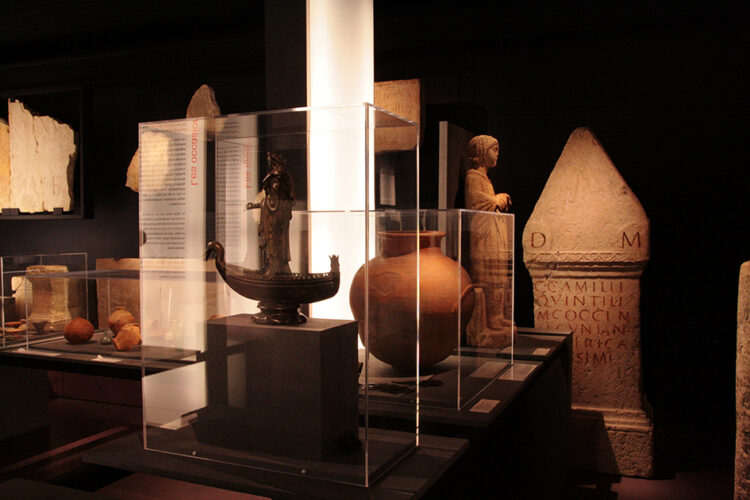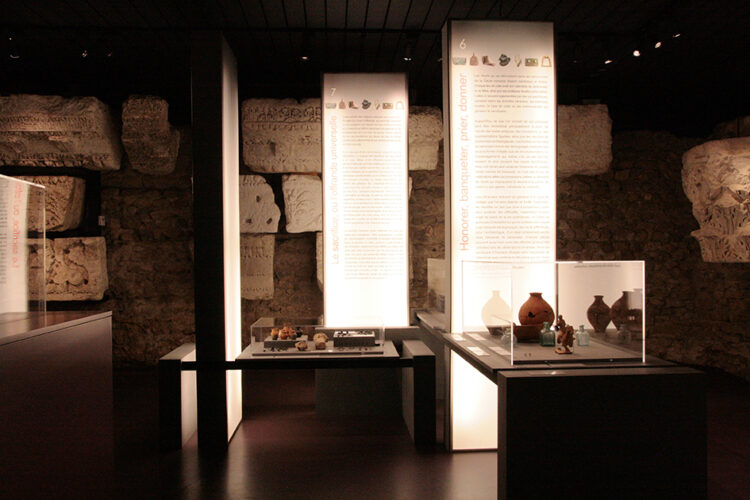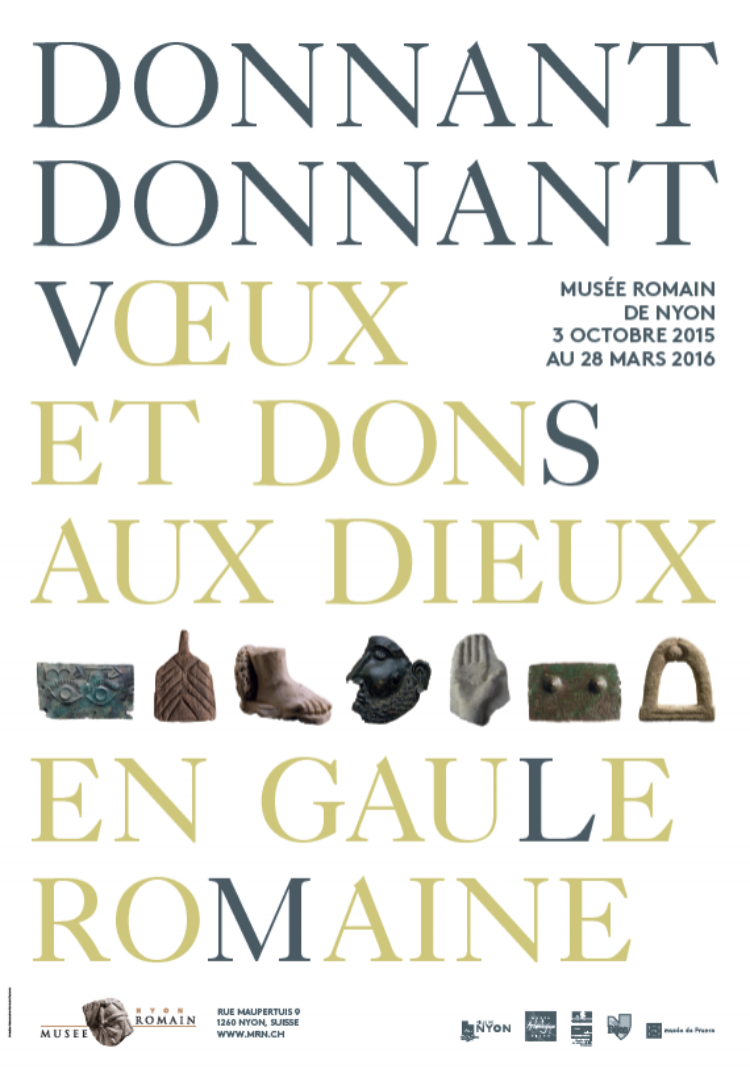
The Roman Museum in Nyon (in co-production with the Archaeological Museum of Dijon) is exhibiting astonishing archaeological evidence revealing the quest for security, health and prosperity that men and women entrusted to their deities. Offering rituals played a key role in ancient religions. In a form of ‘contract’, they enabled men and gods to enter into contact. The gifts complete a process initiated by a vow: by imploring the divinity, the promise of an offering is made if the vow is granted.
In Antiquity, gifts took the form of sacrificial animals, foodstuffs, coins, everyday objects or furniture to adorn or equip shrines. In bronze, wood, terracotta or stone, miniature objects and figurines or plaques representing parts of the human body were created especially to be offered to the gods. These are commonly known as ex-votos. In Roman Gaul, anatomical ex-votos abounded, including feet, hands, busts, lungs and even eyes in bronze sheet metal. These “bodies in pieces” are reminiscent of the ex-votos found from the Middle Ages to the present day, bearing witness to a timeless and universal plea for healing.
